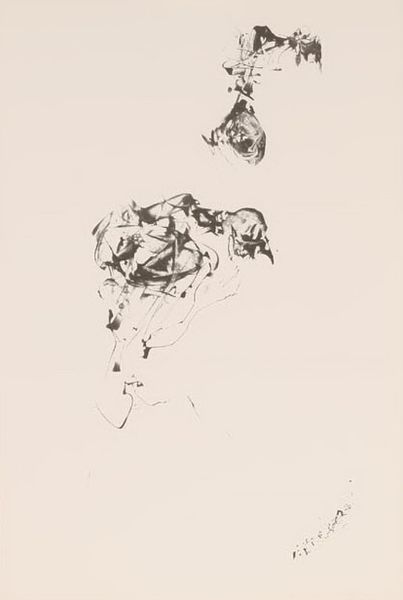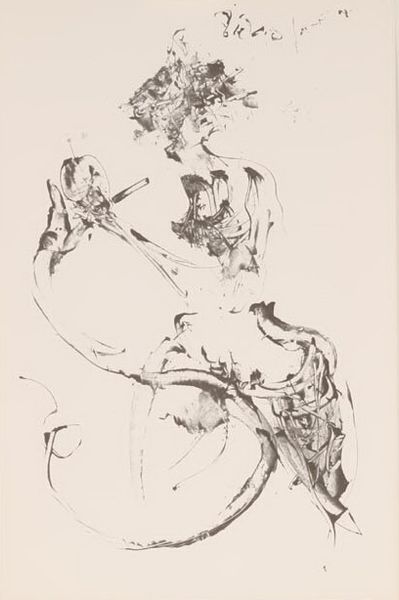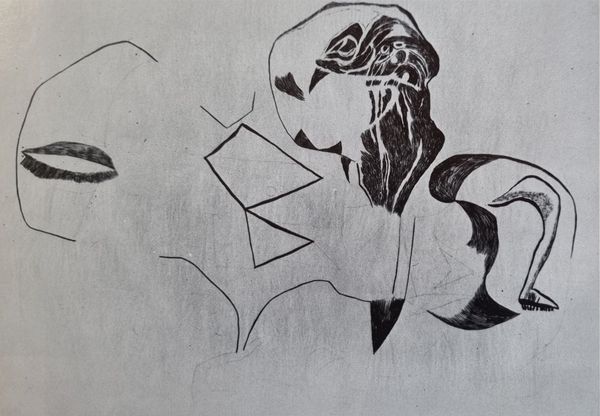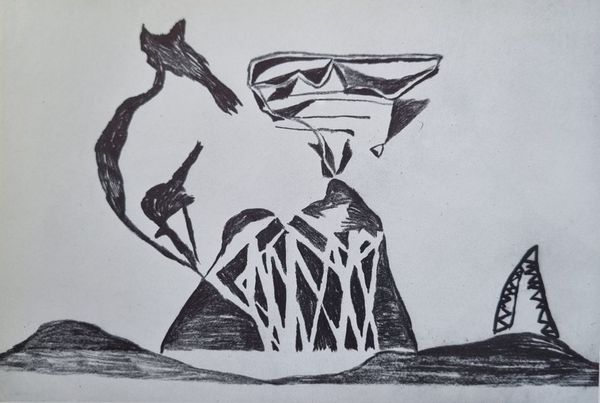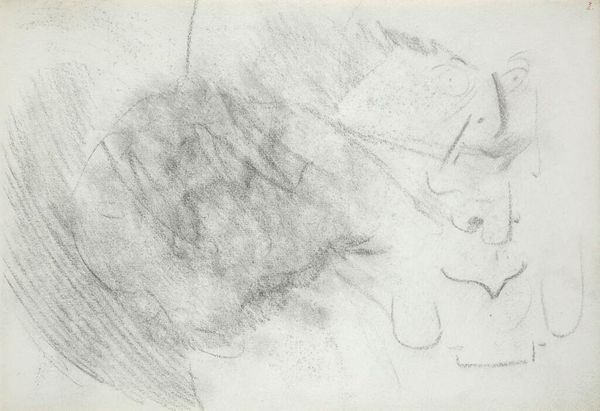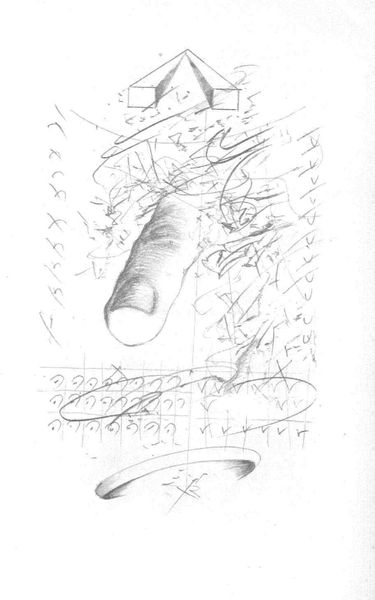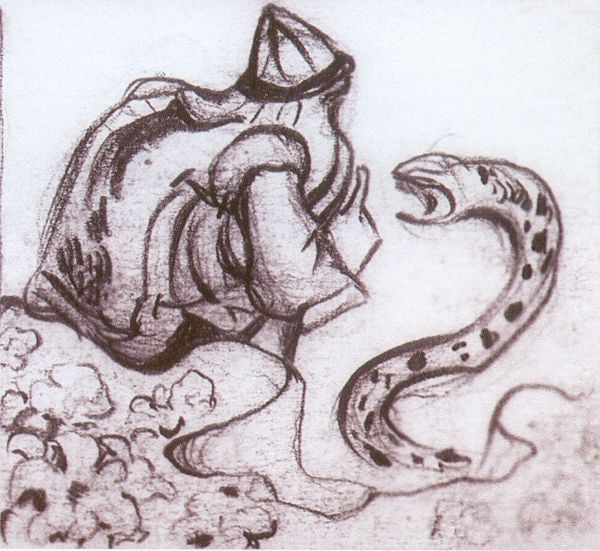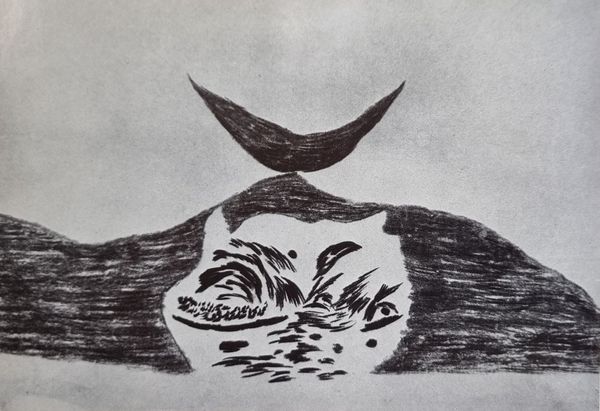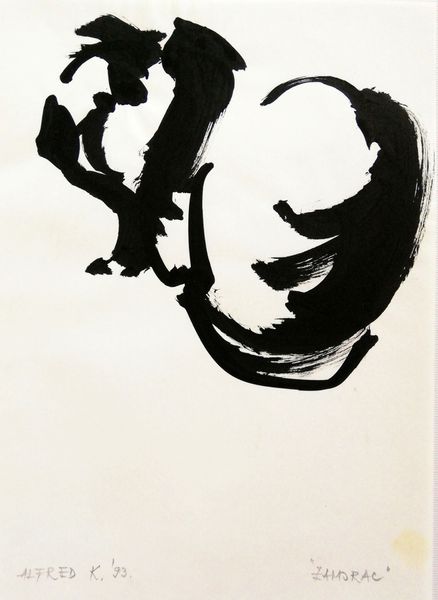
drawing, print, ink
#
drawing
# print
#
pencil sketch
#
ink
#
pencil drawing
#
ink drawing experimentation
#
geometric
#
abstraction
#
line
Copyright: National Gallery of Art: CC0 1.0
Curator: This striking artwork is entitled "Spade Fish." It's an ink and pencil drawing created around 1939. The artist? Angela Straeter. What strikes you about it at first glance? Editor: The monochrome palette lends an air of timelessness, but also a sense of graphic simplicity. The swirling lines contrasting against the striped bodies creates dynamic movement. Are those waves or currents defining the composition? Curator: Contextually, this was created during a time of widespread economic hardship, yet also burgeoning interest in oceanography. The government through the WPA Federal Art Project was sponsoring artistic endeavors nationwide. Do you think this informs its subject matter and style? Editor: It’s tempting to frame it in the broader discussion of labor politics inherent in WPA commissions, yet its aquatic subject matter might lend itself to discussions of climate anxiety. Or is the choice to render sea life through clean geometry just the product of a formal aesthetic interest? Curator: Potentially both. It reflects how society was, and arguably still is, grappling with issues like environmental awareness, expressed here through the vulnerable state of marine creatures. Note also how line work echoes early abstract art movements. The intersection between societal concerns and the artist’s aesthetic sensibilities yields complex readings. Editor: On the one hand we see these clean abstract shapes moving, and on the other, an acknowledgement of social pressures; these fishes may exist inside or outside of these pressures or realities. Looking at how Straeter chose to employ stark monochromaticism emphasizes form, but could equally be seen as an expression of the limited choices or materials of that time. It brings a stark honesty to the rendering of the natural world. Curator: Yes, and this dialogue we’re having now allows for interpretations about resilience during that era. The seemingly delicate execution of those swirls gives strength against economic instability or potential socio-political discord that would later be recognized during the period around WWII. What this work shows about the era that made it. Editor: The convergence of natural subjects and constrained aesthetics invites considerations on the historical gaze of artwork production during times of both limitation and hope. Ultimately it brings out powerful dialogues of its relationship with time and place, its formal simplicity becomes quite moving, and in fact a visual argument on the resilience and impact of the artist within that historical trajectory.
Comments
No comments
Be the first to comment and join the conversation on the ultimate creative platform.
